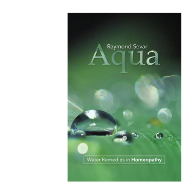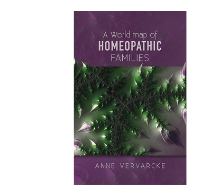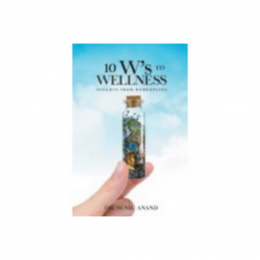Behind the Glass Screen - A Homeopathic Survey of Ozone - Anne Vervarcke, 2009
‘Ozone is an essential element of life and Anne Vervarcke’s book, “Behind the Glass Screen: A Homeopathic Survey of Ozone,” is an essential tool for finding Ozone cases in your practice. The extensive research of the substance, Anne Schadde’s proving, and clearly analyzed cases using the Sensation Method make this remedy easy to identify and prescribe. This book is a must-have Materia Medica for your library.’
—Burch, Melissa, CCH, RsHom(NA)
‘The book ozone is like a complete capsule of information about the source as well as the clinical side of ozone. Anne is a good friend and a sensitive homeopath. We hope her hard work helps many readers to pick Ozone cases. They shall now be easy to recognize and not so elusive and distant like the gas itself.’
—Bhawisha & Joshi, Shachindra
‘This book is about ozone, ozone and ozone. There are three stages to this lucid and compelling book. There is the introduction to ozone in the world and in the environment, setting the stage, and then there is a magnificently crafted materia medica picture drawing upon the proving by Anne Shadde and related materia medica as the centrepiece, and then there is a series of compelling cases to illustrate the remedy used in reality. All this is within the modern context of the vital sensation which is reviewed sufficiently so there was a clear framework. By reading this book, you will have both an enjoyable read, and you will be able to introduce ozone into your practice and fill one huge gap in materia medica that has been missing for far too long.’
—Chappell, Peter, FSHom
‘This book is a welcome addition for homeopaths. It confirms the Periodic system analysis and the provings of Ozone. The central role of Oxygen in our Earth system and in the global warming makes this book very interesting.’
—Scholten, Jan
‘Anne Vervarcke’s book Ozone draws on a wide range of resources. She gives a clear chemical understanding of both Ozone and Oxygenium, and weaves together the ideas, hypothesis, insights and intelligence of many modern homeopaths. The book is crowned by Eight Ozone and three Oxygenium cases, many from her own practice, and her method, the AV Method of anamnesis and analysis is explained and used throughout. If you want to understand Ozone, one of the most undervalued remedies of our time, this is the book that says it all.’
—Tree, Jenni
Anne Vervarcke who was trained in Bloemendaal and Amersfoort has a private clinic since 1989. She has been teaching since 1990, in the CKH which she established, and since a few years she is giving seminars in different countries. In Belgium she gives a Post Graduate lectures once a month with live cases. After attending countless seminars, investigating, practicing and teaching for over 15 years, she fully masters the art of homeopathy.
In 1999 she publishe: “Klassieke homeopathie: niet te goloven?!’ and in 2005: ‘250 jaar na Hahnemann’, both in Dutch. She also has another book titled ‘The Charm of Homeopathy’ published by B. Jain Archibel, which is a commentary on problems faced in clinical practice and solutions to them.
174 pages, paperback








